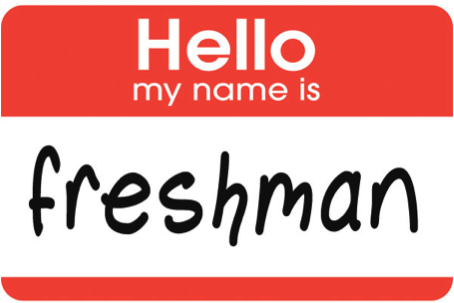High School Timeline
Use this timeline to help you make sure you’re accomplishing everything you need to accomplish on time.Ninth Grade
· As soon as you can, meet with your counselor to begin talking about colleges and careers.
· Make sure you are enrolled in the appropriate college-preparatory courses.
· Get off to a good start with your grades. The grades you earn in ninth grade will be included in your final high school GPA and class ranking.
· In October, take the Preliminary SAT/National Merit Scholarship Qualifying Test (PSAT/NMSQT) for practice. It is strongly re commended to take SAT in 9th grade to experience a real test environment and check your SAT level. When you receive your scores, schedule an appointment with your college counselor to discuss your score.
· Get involved in extracurricular activities (both school and non-school-sponsored).
· Attend whatever college-preparatory nights are held at your school or by local organizations
· Talk to your parents about planning for college expenses. Continue or begin a savings plan for college.
· Investigate summer enrichment programs.
· Become involved in community service and other volunteer activities.
Tenth Grade
· ![]() In October, take the Preliminary SAT/National Merit Scholarship Qualifying Test (PSAT/NMSQT) for practice. When you fill out your test sheet, check the box that releases your name to colleges so you can start receiving brochures from them. When you receive your scores, schedule an appointment with your college counselor to discuss your score.
In October, take the Preliminary SAT/National Merit Scholarship Qualifying Test (PSAT/NMSQT) for practice. When you fill out your test sheet, check the box that releases your name to colleges so you can start receiving brochures from them. When you receive your scores, schedule an appointment with your college counselor to discuss your score.
· Become familiar with general college entrance requirements.
· Participate in your school’s or state’s career development activities.
· Discuss your PSAT score with your counselor.
· Read nonfiction books are strongly recommended to increase reading comprehension
· Work on your writing skills—you will need them no matter what you do.
· Keep your grades up so you can have the highest GPA and class rank poss ible.
· If you are interested in attending a military academy, such as West Point or Annapolis, now is the time to start planning and getting information.
· Visit a few more college campuses. Read all of the mail you receive from colleges. You may see something you like.
· Attend the annual Orlando National College Fair (NACAC).
· Consider taking SAT II Subject Tests in the courses you took this year while the material is still fresh in your mind. Some colleges require these tests which are offered in May and June.
Eleventh Grade
· Take the PSAT/NMSQT. In addition to National Merit Scholarships, this is the qualifying test for the National Scholarship Service and National Hispanic Scholar Recognition Program.
· Make a list of colleges that meet your most important criteria (size, location, distance from home, majors, academic rigor, housing, and cost). Weigh each of the factors according to their importance to you.
· Speak to college representatives who visit your high school.
· Collect information about college application procedures, entrance requirements. Begin comparing the schools by the factors that you consider to be most important.
· Begin narrowing down your college choices. Find out if the colleges you are interested in require the SAT I, ACT Assessment, or SAT II Subject Tests for admission.
· Take ACT or SAT to improve your previous scores.
· Meet with your counselor/Assistant Principal to review senior-year course selection and graduation requirements.
· Discuss ACT Assessment/SAT I scores with your counselor. Register to take the ACT Assessment and/or SAT I again if you would like to try to improve your score.
· Discuss the college essay with your English teacher.
· Stay involved with your extracurricular activities. Colleges look for consistency and depth in activities.
· Consider whom you will ask to write your recommendations.
· Inquire about personal interviews at your favorite colleges. Call or write for early summer appointments. Make necessary travel arrangements.
· Apply for a summer job or internship. Be prepared to pay for college applications, financial aid, and testing fees in the fall.
· Visit the campuses of your top two or three college choices.
· After each college interview, send a thank-you letter to the interviewer.
· Practice filling out college applications, and then complete the final application forms or apply online through the web sites of the colleges in which you are interested.
· Volunteer in your community.
· Compose rough drafts of your college essays. Have a teacher read and discuss them with you. Proofread them and prepare final drafts. Proofread your final essays at least three times.
Twelfth Grade
· Continue to take a full course load of college-prep courses. 
· Keep working on your grades. Make sure you have taken the courses necessary to graduate in the spring.
· Continue to participate in extracurricular and volunteer activities. Demonstrate initiative, creativity, commitment, and leadership in each.
· To male students: You must register for selective service on your eighteenth birthday to be eligible for federal and state financial aid.
· Talk to counselors, teachers, and parents about your final college choices.
· Make a calendar showing application deadlines for admission, financial aid, and scholarships.
· Check resource books, computer programs, and your guidance office for information on scholarships and grants. Ask colleges about scholarships for which you may qualify.
· Give recommendation forms to the teachers you have chosen along with stamped, self-addressed envelopes, so your teachers can send them directly to the colleges. Be sure to fill out your name, address, and school name on the top of the form. Talk to your recommendation-writers about your goals and ambitions.
· Verify with your guidance counselor the schools to which transcripts, test scores, and letters are to be sent. Give your counselor any necessary forms at least two weeks before they are due, or according to your counselor’s deadline – whichever is earlier.
· Register for and take the ACT Assessment, SAT I, or SAT II Subject Tests, as necessary.
· Be sure you have requested (either by mail or online) that your test scores be sent to the colleges of your choice.
· Mail, or send electronically, any college applications for early-decision admission by November 1st or college deadline.
· If possible, visit colleges while classes are in session.
· If you plan to apply for an ROTC scholarship, remember that your application is due by Dec. 1st.
· Print extra copies or make photocopies of every application you send.
· Attend whatever college-preparatory nights are held at your school or by local organizations.
· Send midyear grade reports to colleges. Continue to focus on your schoolwork!
· Fill out the Free Application for Federal Student Aid (FAFSA) and, if necessary, PROFILE®. These forms can be obtained at http://www.fafsa.ed.gov and downloaded to an electronic file, but may not be processed before January 1st. Do not send them before then.
· Mail or send electronically any remaining applications and financial aid forms before winter break. Make sure you apply to at least one college that you know you can afford and where you know you will be accepted.
· Follow up to make sure that the colleges have received all application information, including recommendations and test scores.
· Meet with your counselor to verify that all applicable forms are in order and have been sent out to colleges.
· Watch your mail between February 1st and April 1st for acceptance notifications from colleges.
· Watch your mail for notification of financial aid awards between April 1st and May 1st.
· Compare the financial aid packages from the colleges and universities that have accepted you.
· Make your final choice and notify all schools of your intent by May 1st. If possible, do not decide without making at least one campus visit. Send your nonrefundable deposit to your chosen school by May 1st as well. Request that your guidance counselor send a final transcript to the college in June.
· Be sure that you have received a FAFSA acknowledgment.
· If you applied for a Pell Grant (on the FAFSA), you will receive the Student Aid Report (SAR) statement. Review this Pell notice and forward it to the college you plan to attend. Make a copy for your record.
· Complete follow-up paperwork for the college of your choice (scheduling, orientation session, housing arrangements, and other necessary forms).
· If applicable, apply for a Stafford Loan through a lender. Allow eight weeks for processing.
· Receive the orientation schedule from your college.
· Get residence hall assignment from your college.
· Obtain course scheduling and cost information from your college.
· Congratulations! You are about to begin the greatest adventure of your life. Good luck.

